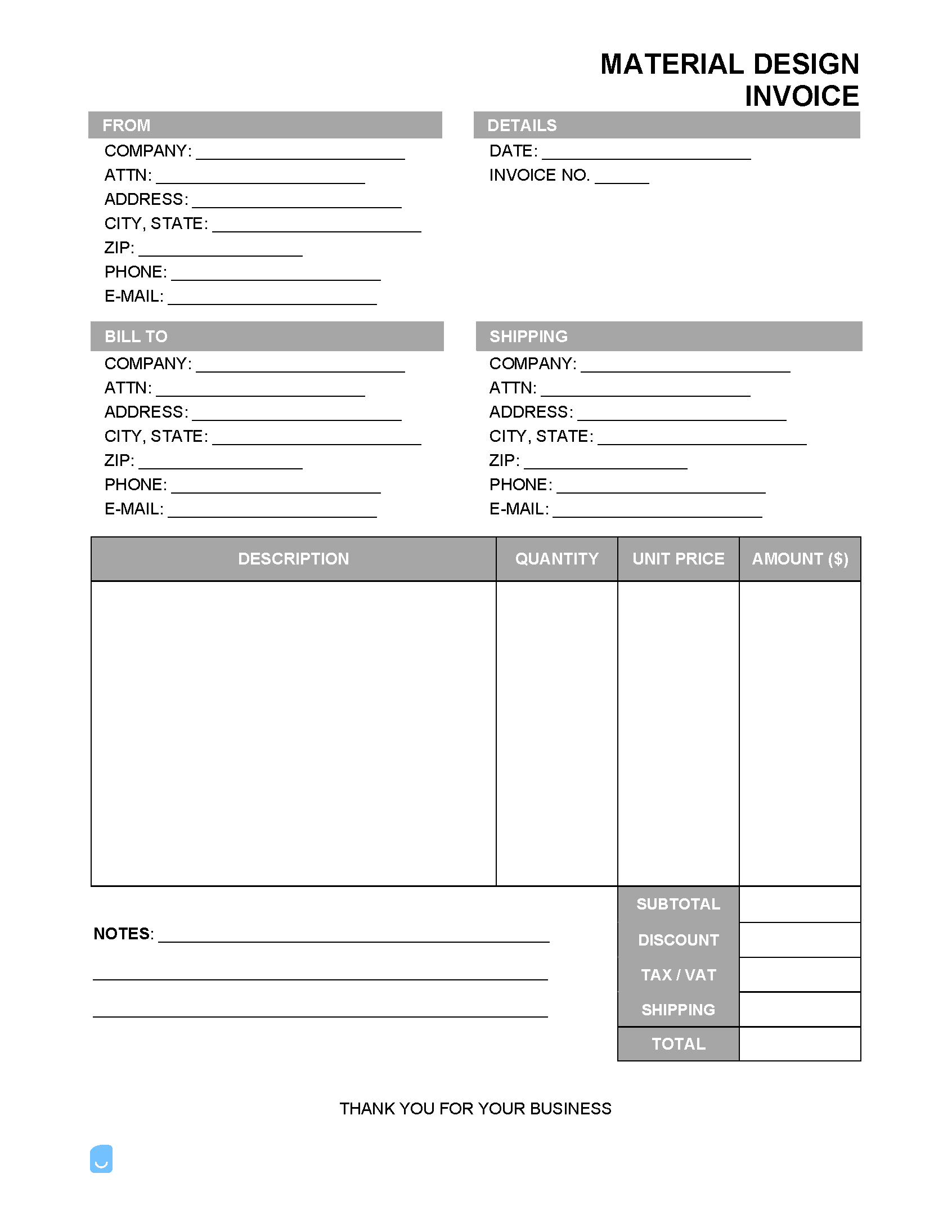Material Design Invoice Template
A material design invoice is a receipt or document created by a material designer that bills a customer or company for the cost of a service rendered. The invoice includes information about the project and deliverables completed by the material designer and state the amount owing and the means by which it can be paid.

How to Create a Material Design Invoice
A material design invoice requests payment and also functions as a record of a transaction. It’s important to implement an efficient billing and invoicing system if you’re a material designer, no matter your level of expertise, in order that you can keep track of your finances for personal, tax, and audit purposes.
What is Material Design?
Material design is a language and a system for designing interfaces across iOS, Android, and digital platforms. It’s used to improve the way a human encounters a device. Material design has been used in the development of many Google products, such as Android, Chrome, and YouTube. Both Apple and Google have their own material design languages used when creating apps on their devices. Material design is also popular amongst Bootstrap developers that build CSS front-end frameworks on mobile devices. Below are professionals that fall under the umbrella of material design.
User Experience (UX) Designers
UX designers do the work of creating evidence-based, research-driven designs that create enjoyable, user-friendly experiences for end users. These designers focus on all aspects of a product’s development.
Principal Designers
Principal designers generally lead a design team through the work of producing web pages and applications.
Design Managers
Design managers manage and coordinate a design team through the process of designing a range of products, from websites to apps to physical products.
Interaction (IxD) Designers
Interaction designers design interactive digital products. While they are often confused with UX designers, they’re more focused on a specific part of the user experience, which is the moment the user interacts with the product.
Visual Designers
Visual designers combine graphic design and user interface design to focus on creating visuals for websites, apps, and other digital tools.
What Does Material Design Entail?
Material design is based on the principles of how materials interact in the real world. The practice uses shadows and depth to create a sense of hierarchy and visual interest. Material designers will use physical materials such as paper, components, and palettes to test reactions to natural movements. For example, an icon made of layered paper will be tested at an angle against a beam of light to see how and where a shadow will react. Designers can then apply the same shadows and effects to the material design digitally. Material design has been criticized for its use of skeuomorphism, or the imitation of real-world objects in digital interface design. Some have also criticized material design for its lack of originality. Despite its criticisms, material design has been widely adopted by designers and developers.
Material Design Guidelines
Material design is a crucial concept when building or creating an app for a smart device. There are specific guidelines that should be followed to ensure that a designer’s methods are accessible to all users on any device. Given material design is used mainly with Google and Apple products, the guidelines below can be used as a general reference:
Pricing Material Design Services
When charging for material design, consider your experience and level of training. Consider also your creative process. What most clients don’t understand about creative work is that there are a lot of hours of thought, imagination, and inspiration that must precede the drafting and testing of ideas. Make sure your hourly rate is inclusive of these hours.
Key Elements of a Material Design Invoice
A material design invoice should include the following elements:
- Designer’s name and contact information
- Client’s name and contact information
- Date of invoice
- Invoice number
- Description of services rendered (designs, details, graphic design, web design, illustrations, etc)
- Total amount owing
- Applicable taxes
- Payment terms
You can use a program like Microsoft Excel or Microsoft Word to manually generate an invoice before exporting it as a PDF and emailing the document to the client. Alternatively, you can use an online invoice generator to accelerate and simplify the process.
Tips for Creating a Material Design Invoice
- Use a consistent layout throughout the document in order that your invoice looks professional.
- Use a clear, easy-to-read font.
- Include plenty of white space.
- Use color and icons sparingly, to avoid overwhelming the client.